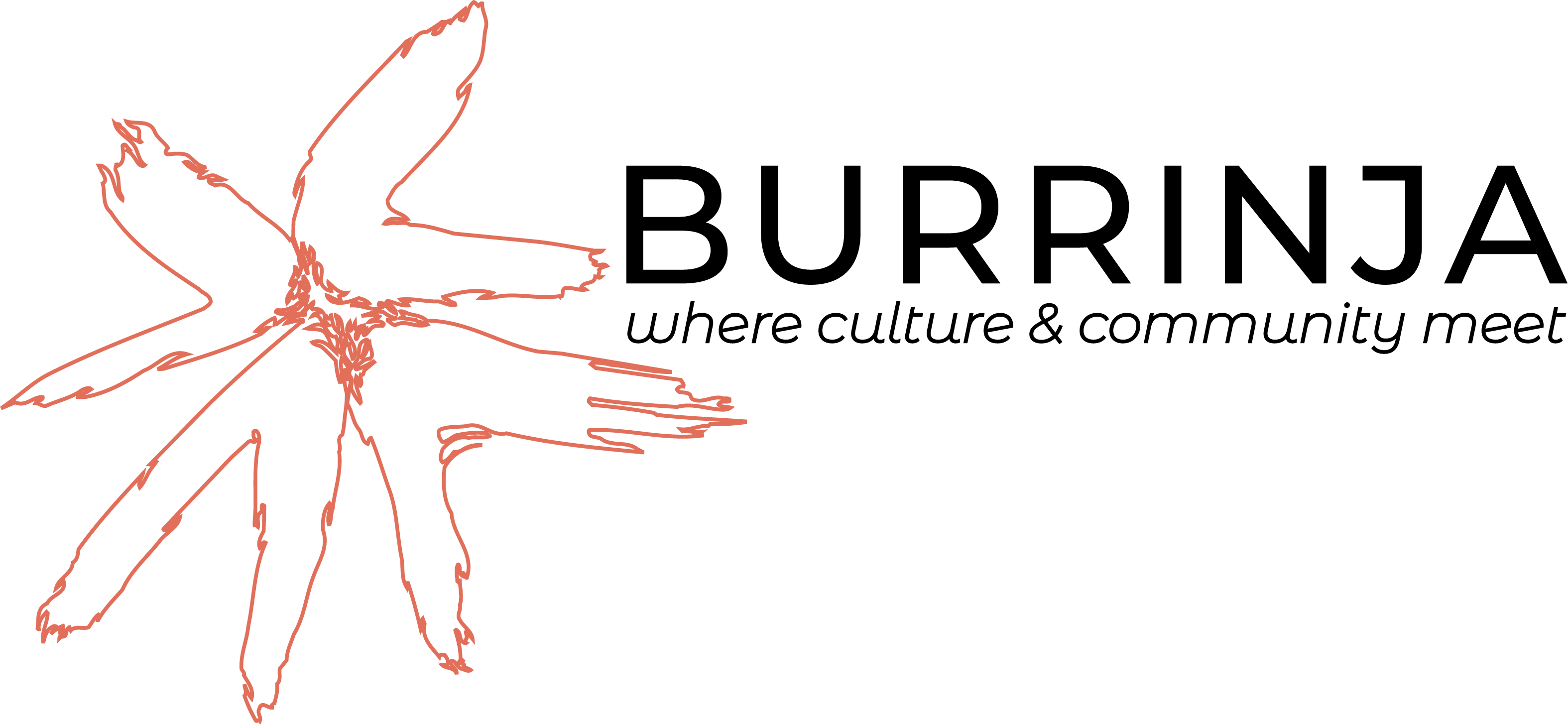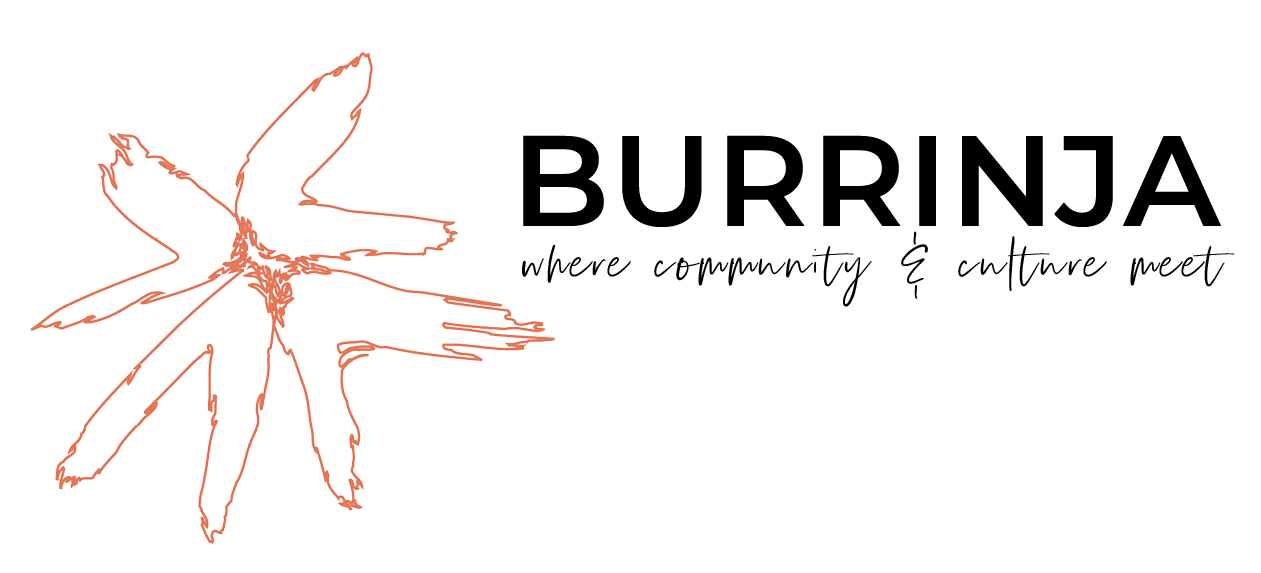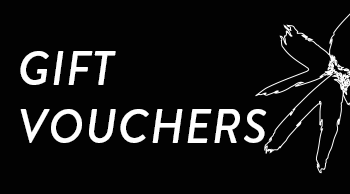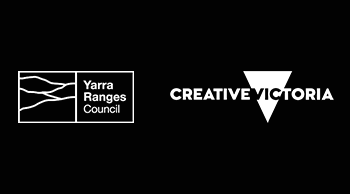The Culture of Collecting Then and Now
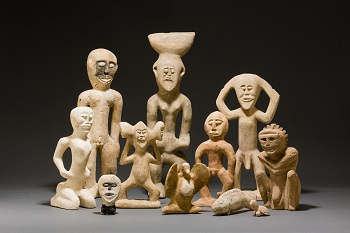 Various Ingiet Stone Carvings, New Britain, PNG, McLeod Gift Collection Photography by Kate Morris
Various Ingiet Stone Carvings, New Britain, PNG, McLeod Gift Collection Photography by Kate Morris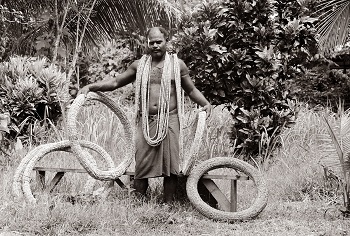 Tolai Man presenting Shell Money | Photography by Neil McLeod
Tolai Man presenting Shell Money | Photography by Neil McLeod
As part of the showcase exhibition 'Secret Ingiets' Burrinja is delighted to present a symposium on Pacific Art Collections - The Culture of Collecting Then and Now
Like many museum collections of Pacific art, Yarra Ranges Council's McLeod Gift Collection, managed and curated by Burrinja, has been built through efforts of collectors in the field, often at their own risk and with their own money. Most of these remarkable collections have been amassed in the late 19th and first half of the 20st century. Yet, with increasing acknowledgement of intellectual and creative rights of the ethnic/indigenous communities of origin important issues of access and interpretation of cultural material have arisen. Consultation and collaboration have now become relevant aspects in contemporary museum practice. Repatriation of cultural material including that of sacred objects and human remains is no longer unusual.
This symposium brings together experts in the Pacific arts and museum sector discussing aspects of how the nature of field collecting has changed over time? How it has affected indigenous communities, and what the national and global trends in managing Pacific Collections and making it accessible to communities of origin are?
Pacific Art Collections – The Culture of Collecting Then and Now addresses these and related important contemporary collection issues with a remarkable program of notable speakers representing a wide cross section from the sector – from field collectors to senior collection curators and those who can best provide the perspective of indigenous communities of origin.
Speakers Include:
Harold Gallasch
Pacific art collector, curator and valuer, Hahndorf
Jim Specht
Senior Fellow, Australian Museum, Sydney
Mike Pickering
Senior Curatorial Fellow, National Museum of Australia, Canberra
Dion Peita
Collections Manager, Pacific and International Collections, Cultural Collections and Engagement, Australian Museum, Sydney
Grace Vele Guise
Senior Technical Officer, Anthropology Department, Papua New Guinea National Museum and Art Gallery, Port Moresby
Saturday 7 September 2013 Burrinja Theatre, 11 am – 4 pm
$65 Full Price,
$35 Student/Jarmbi Members
Includes Morning Tea, Lunch and Afternoon Tea.
Symposium Program Details
Program and Booking form avaliable to download here
Session 1 Harold Gallasch | Powerful Ingiets
As a group, the Tolai people emigrated from New Ireland, via the Duke of York Islands, to the Gazelle Peninsula of New Britain. In their new home-land they flourished, and so did their two men's secret societies, which became much more powerful. While the Tubuan society acted as a select group within the community the Ingiet was a fringe group, preying very much on the fears of the people, a society often using extortion and murder to gain its own ends.The adherents to this group were rarely known, conducted ceremonies in secret, often deep in the jungle. But, by the use of sorcery, they exerted great control over the Tolai community. A part of the 'modus operandi' of the Ingiet was the carving of small stone statues. The spirit of evil could be infused into these carvings to the extent that, even in the late 20th Century, they were feared by those older people with knowledge of the Ingiet's power.
Session 2 Jim Specht | Collecting 'dead birds' and other 'curiosities' in the New Guinea Islands, 1875-1914
The late 19th century was an incredible period for museums and private individuals seeking to acquire artefacts, often described as 'curiosities', from the Pacific Islands. While some of this acquisition was linked to the how-discredited view of the world's non-western peoples as representatives of stages of 'cultural evolution' earlier than that of the societies of western Europe and North America, there was also a strong commercial interest among both individuals and companies. This was particularly marked in the New Guinea islands, where German colonial interests generated one of the most remarkable phases of collecting in Pacific history. Over a period of 40 years, from 1875 to 1914, thousands of artefacts were taken to Australia, the USA and Europe. German colonial residents particularly vied with each other to make the most impressive collections for museums in German cities in the hope of attracting special honours ('dead birds') from the various Grand Duchies,Principalities and Free Cities. In the years before the Great War of 1914-1918, numerous expeditions visited these islands and further stimulated this competition. The talk will describe these activities, and discuss some of their implications for both then and now.
Session 3 Mike Pickering | Old Ways and New Ways. Changes in the Ways Museums Collect
Over the past 25 years there has been increasing self-examination by history museums on the issues of collection histories. As we look at the ways in which our objects were acquired in the past we have learnt to consider ways in which objects are acquired today. Objects in collecting institutions have arrived there through many channels – by theft, grave-robbing, lootings, police and military actions, legal process, sale, gifting, donation, and serendipity. ] Ethical engagement with collections – for research or exhibition – increasingly requires revisiting the circumstances of collection [ and collection histories ]. This is addressed in this paper, firstly through case studies of the ways in which Pacific objects have arrived in the National Museum of Australia and secondly through an examination of how the ethics of collections is affecting the museums national and international engagements.
Session 4 Grace Vele | What is primitive art in PNG, the culture of collecting and preserving the cultural heritage of
the country
Session 5 Dion Peita | Understanding of Heritage, Identity and Self for Pacifica Peoples in NSW
The Australian Museum holds one of the largest and most significant collections of Pacific material in the world, 60,000 objects, and are therefore uniquely placed to develop bespoke social inclusion programs that draw on this rich collections. Since 2009 the Museum has been exploring innovative ways to work with young people from Sydney's Pacific diaspora convicted or charged with serious and violent criminal offences. Our aim is to build cultural awareness among 'At risk' youth from Pacific communities and to challenge beliefs and perceptions that being a 'warrior' is synonymous with being violent. We aim to provide young people with a sense of pride and dignity when the history of the objects is explained to them, and as their relationship to these powerful objects is revealed. As part of a broader suite of intervention programs, we contend that exposure to traditional culture can help young people break the cycle of offending, and lower the chance that they will offend again in future.
Session 6 Panel Discussion | Between the Old and the New?
The Future of Pacific Art Collections traversing the Traditional and Contemporary
Featuring; Dion Peita, Mike Pickering, Grace Vele, others TBC
Public Programs
Secret Ingiets Exhibition Opening | Saturday 7 September @ 4.30pm
Burrinja Gallery | Free Entry
Come and celebrate the opening of the Mysterious Secret Ingiets exhibition at the Burrinja Gallery. Cr Jim Child, Mayor, Yarra Ranges Council will officially open the exhibition, In the presence of Emmanuel Mulai, Ratongaor Village, East New Britain.
Film Screening of 'Savage Memory' | Saturday 7 September @ 6.00pm
Burrinja Theatre | Free Entry
Bronislaw Malinowski is commonly regarded as one of the founding fathers of anthropology. With extensive research on sex, magic and spirits of the dead among the Trobriand Islanders in Papua New Guinea in 1915, his work set the stage for future anthropologists. Four generations later, his great-grandson travels to the Trobriand Islands confronted by a very controversial legacy Malinowski left behind.
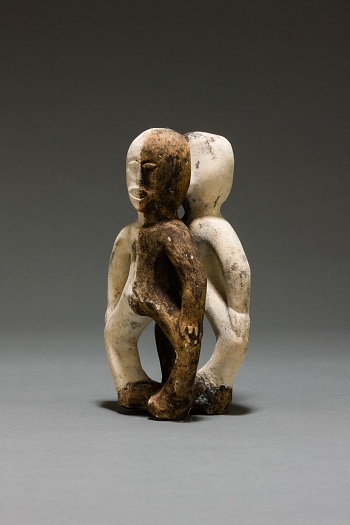 Secret Ingiet | catalogue item BOO63
Secret Ingiet | catalogue item BOO63 McLeod Gift Collection | Photography by Kate Morris
 Secret Ingiet | catalogue item BOO58
Secret Ingiet | catalogue item BOO58McLeod Gift Collection | Photography by Kate Morris
Last updated 03/09/2013
